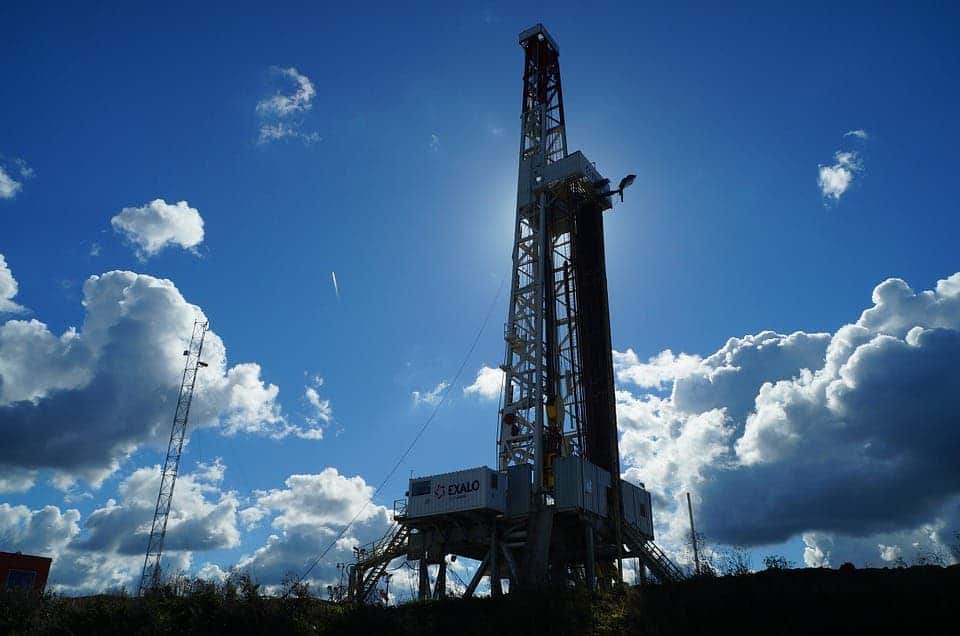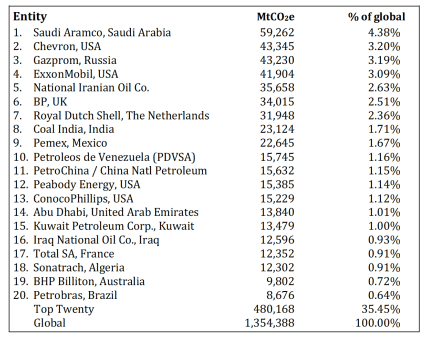While countries have a major role to play, climate action also requires the involvement of the private sector — especially the largest oil, gas, and coal companies, which can be directly linked to one-third of all greenhouse gas emissions in the modern era, according to a new study.

The dataset published by the Climate Accountability Institute showed that the twenty largest investor-owned and state-owned fossil fuel companies produced carbon fuels that emitted 35% of the global total from 1965 to 2018.
Looking at the entire historical data, the full database of fossil fuel and cement entities showed they were responsible for 69.8% of the global emissions since 1751. The list includes companies such as Chevron, ExxonMobil, BP, and Shell.
“These companies have significant moral, the financial, and legal responsibility for the climate crisis, and a commensurate burden to help address the problem,” Climate Accountability Institute said. “The climate crisis is worsening, global emissions are still rising, and they must peak immediately.”

Twelve of the top 20 companies are state-owned and together their extractions are responsible for 20% of total emissions in the same period. The leading state-owned polluter is Saudi Aramco, which has produced 4.38% of the global emissions total on its own, the data showed.
The global polluters’ list developed by the Climate Accountability Institute uses company-reported annual production of oil, natural gas, and coal and then calculates how much of the carbon and methane in the produced fuels is emitted to the atmosphere throughout the supply chain, from extraction to end-use.
“It is incumbent on companies that value their social license to operate to respect climate science, manage corporate risks, accordingly, commit to reducing future production of carbon fuels and their emissions in alignment with the Paris Agreement pathway under 1.5 °C,” the institute said.
The role of fossil-fuel emissions
Virtually all scientists agree that burning fossil fuels is the cause of the current climate heating. The world is now 1°C warmer than it was in pre-industrial times, with severe consequences worldwide.
Some gases in the Earth’s atmosphere act like the glass in a greenhouse, trapping the sun’s heat and stopping it from leaking back into space. Many of these gases occur naturally, but human activity is increasing the concentrations of some of them in the atmosphere, in particular, carbon dioxide (C02).
CO2 is the greenhouse gas most commonly produced by human activities and it is responsible for 64% of man-made global warming. Its concentration in the atmosphere is currently 40% higher than it was when industrialization began. Other greenhouse gases are emitted in smaller quantities, but they trap heat far more effectively than CO2, and in some cases are thousands of times stronger.
According to research published in 2017 by the Union of Concerned Scientists in the US, CO2 and methane emissions from the 90 biggest industrial carbon producers were responsible for almost half the rise in global temperature and close to a third of the sea level rise between 1880 and 2010.


